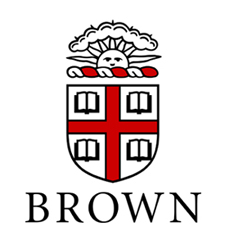Administrative History
Chemistry was taught at Brown for the first time in 1811 when Dr. William C. Bowen was engaged to lecture to the medical students, which he did until 1813. The course was taught inconsistently until the Newport Rogers Professorship of Chemistry was founded by a bequest of William Sanford Rogers in 1872. The first to hold this professorship was John Howard Appleton 1863, who was the founder and moving spirit of modern chemistry at Brown from 1865 until his retirement in 1914. Research in chemistry at Brown owes its start to the arrival of John C. Bucher in 1901. The first Ph.D. in chemistry was awarded in 1903. In 1910, when more students were taking chemistry, which was voluntary, than any other course except required English and mathematics, a laboratory for beginners was opened to relieve laboratory space needed for advanced students.
The Metcalf Chemical Laboratory was built in 1922, a gift of Jesse H. Metcalf. The appointment of Dr. Charles A. Kraus as professor of chemistry and director of laboratories in 1924 brought a vigorous and dynamic leader to the department. New scholarships and fellowships in chemistry attracted students from distant states and from Europe for advanced study. The opening of the Metcalf Laboratory also brought about the institution of a new undergraduate course leading to the degree of Bachelor of Science in Chemistry, which provided training for those who planned to pursue chemical research or to work in the chemical industry. In 1938 the Metcalf Research Laboratory, another gift from Mr. Metcalf, was built to Kraus's specifications. The laboratory’s facilities provided research equipment for twice as many graduate students and faculty members and opened existing laboratory space for undergraduates to conduct their own investigations. The new building also contained outstanding equipment for research not only in electrolytes, but also in photochemistry, the field of Professor W. Albert Noyes, Jr. During the Second World War many in the department, especially Professor Kraus, were involved with work for the Manhattan Project.
After Professor Paul C. Cross became chairman in 1947, he recruited Professors James S. Coles, Robert H. Cole, and Donald F. Hornig, who had worked at the Woods Hole Oceanograhic Institution or at Los Alamos during the war. These four with Professor Leallyn B. Clapp led a resurgence in the department's research and teaching. A radical change in the curriculum for chemistry majors put much of organic chemistry into the freshman year, with physical and inorganic chemistry following the next year for the sophomores. This proved to be too rapid an introduction to chemistry for most undergraduates, so by the time it became the curriculum for all chemistry students, an introductory semester of thermodynamics, kinetics, and equilibrium had been inserted before the start of the organic course which then began in the second semester. In 1952, Professor Coles left to become first president of Bowdoin College and then in 1968 president of the Research Corporation.
For many years the research in the department stressed physical chemistry almost to the exclusion of other fields. Professor Clapp helped to restore a more balanced program by starting his work in inorganic and organic chemistry. In 1957 Professor Hornig left for Princeton. Professor Julian H. Gibbs arrived in 1960 and became an enthusiastic and active advocate for physical biochemistry at Brown. In 1979 he became president of Amherst College. Professor John Ross contributed greatly by stimulating an increased emphasis on theoretical chemistry in the graduate curriculum. He moved to M.I.T. in 1966 and to Stanford in 1979. In 1973 Professor Clapp and in 1974 Professor John O. Edwards received the Manufacturing Chemists Award for excellence in teaching chemistry, and in 1974 Professor Cole received the Irving Langmuir Prize, this country’s highest award in chemical physics, for his work in dielectrics.
With the steadily increasing diversity of the interests of the members of the faculty and the complexity and size of the instrumentation required for modern chemistry the space available in the Metcalf Laboratories became inadequate. The problem was solved with the construction of the GeoChem building into which the departments of chemistry and geological sciences moved in 1982.
In the decade following the move to the new building the department's research was spread over a wide range of chemistry. Included were work on the mechanisms of enzyme reactions and biosynthesis, the design of ligands for DNA, the synthesis of natural products, the electrochemistry of radicals and complexes, solid state chemistry, the structure of surfaces and the dynamics of their reactions with molecules, X-ray crystallography, the mechanisms of inorganic reactions, the infra-red and Raman spectroscopy of glasses, nuclear magnetic resonance applied to biological processes, laser studies of ultra fast processes in solution and in gaseous reactions, theoretical studies of clusters and surfaces, of the electronic structure of condensed phases, and of equations of state. With twenty faculty members the Chemistry Department was small enough so that its continuing tradition of friendly cooperation encouraged joint research projects and interactions between people having different specialties. The chairmen of the department since Kraus have been Robert F. Chambers, Paul C. Cross, Robert H. Cole, Joseph F. Bunnett, Julian H. Gibbs, William M. Risen, Edward F. Greene, David E. Cane, and Peder J. Estrup.


